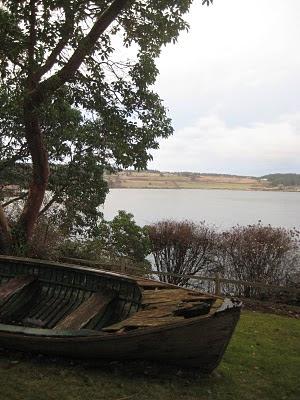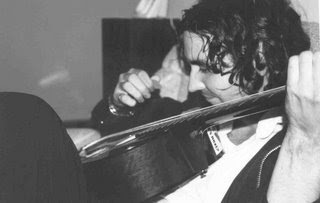
For this week’s author Q&A, I am pleased to present poet Caroline Maun. She is the editor of
The Collected Poems of Evelyn Scott, author of a collection of poetry titled
The Sleeping and a poetry chapbook titled
Cures and Poisons. She is also a songwriter with the pop band Black Hat, which released its first album,
Phases of the Sun, in 2009.
Caroline will be part of a great poetry event TONIGHT at The Scarab Club in Detroit MI. Also reading is Mariela Griffor and Dan Padilla. The Scarab Club is located at 217 East Farnsworth, Detroit, and the reading takes place from 7-10pm.
Please join me in welcoming Caroline Maun…
Hi Caroline. Can you tell us a little about your latest release, Cures and Poisons?Hi Lori. Thank you for giving me the opportunity to discuss some of what I do poetically.
Cures and Poisons is a chapbook published in 2009 with Pudding House Press. It is a work about the ways we trip and fall--physically, spiritually, romantically. It documents, in its way, some of the most important relationships and experiences in my life, although I would extend the disclaimer I used in my first book of poems,
The Sleeping: "This is a work of the imagination." For me, as for many poets, life provides the raw material that we then draw a frame around, poem by poem. Any event or person that we concentrate on poetically is distorted to some degree if only because we have to say, through the form of the poem, that an aesthetic experience begins here and ends there. This beginning--saying what is or isn't a poem--then is compounded with all of the particular choices of language we use to sculpt the raw material into a meaningful piece of work--something that hopefully stands on its own and exists independently in others' imaginations. Poems in this chapbook address parents, childhood experiences, a rape I survived as a teenager, a love relationship, moving to Detroit, and the centrality in my experience of mood.
What inspired the title?
The title poem, "Cures and Poisons" was inspired by an offhand remark by a friend. I write songs for a local pop band called Black Hat, and when we were in the studio our producer and friend Jef Reynolds said "Why don't you write a song about what is wrong with the world." Tall order, but inspiring. I meditated on that, and my answer for that moment turned into the poem "Cures and Poisons." The poem was later set to music by band member Frankie the K (Frank Koscielski) and we have performed it around the area for a while. The poem stands on its own on the page, though, and describes something of the neo-Depression/post-bubble world that we now inhabit. It is about a fallen Eden where "the garden is a dune," "because we could we did" and "cures turn to poisons soon." Each stanza explores some way in which our perspectives have been distorted, we sought an easy answer that backfired, or what we thought was important evaporated like a mirage. I chose this as the title for the volume because many of the poems are about that type of personal epiphany--where you find yourself empty-handed. The volume ends with a poem that turned into a blues lyric in Black Hat's album
Phases of the Sun which also came out in 2009. "The Road" is about not taking the shortcut, realizing that the road is right there ahead, and keeping a steady head when "the wind starts to blow." It was inspired by the Cormac McCarthy novel of the same title.
Would you like to share one of the shorter poems with the readers today?
Sure! The following short, short, short poem (the shortest in the chapbook) is written as if it were an epitaph to the work. It plays the role of a pause for deep breath and a somewhat nervous laugh between stages of the process--often quite a bit darker-- that the work represents. In a peculiar way, all the main themes of the volume are here reduced to an attar. Hopefully, it will give your readers a chuckle as they see the familiar origin story retold in the spirit of a
New Yorker cartoon:
After the Fall
There was nothing more to do
but
pick up
that apple and chew,
once bitten,
pick up that apple and chew.
As a poet, do you deliberately set out to work on a theme for the purpose of a chapbook, or do you gather poems from a broader collection and narrow down your selections?In this case, I also have a longer, full-length volume of approximately seventy poems that I hope will find its way to print very soon, and when presented with the opportunity to publish a chapbook I had the excellent challenge of asking myself how best to re-organize and select material for a shorter work. There are probably more ways to reshape material for a new work than we would be able to calculate without resorting to counting machines--the trick is to find a way to let the material lead you as an artist into a new space through the art of arrangement. In this case I wanted to capture the emotional arc of the longer work and let the energy between the poems reach a different intensity. It was an honor to have the chapbook come out with Pudding Hous

e Press, and I thoroughly enjoyed the process of crafting it.
You'll be traveling to Denver this year for the AWP conference in April. Do you have any other events or readings coming up you'd like to tell us about?
I'll be reading at the Woodward Line Series hosted by James E. Hart III and Kim Hunter at the Scarab Club on Wednesday, January 20th at 7 p.m. If your readers enjoy a musical approach, I'll be performing with the Black Hat band at The Raven at 932 Military Street in Port Huron MI on March 20th at 8:00 p.m. and at the Motown Word Fest on March 27. For those attending the Association of Writing Professionals conference in Denver I'll be at the Pudding House Press booth at 2 p.m. on Friday, April 9th, reading poetry and selling chapbooks. Anyone interested in purchasing the chapbook can do so at my website,
http://www.carolinemaun.com/.
What are you working on now? I'm currently completing a monograph on the modernist American women writers Lola Ridge, Evelyn Scott, Charlotte Wilder and Kay Boyle. The title is Mosaic of Fire and it is essentially a biography of their social network, centered in Greenwich Village during the years 1920-1940. I find that when I'm working on a book or article that is more discursive, I end up drawing on the same energy that fuels the creative work; I have to set the poems to the side during the heat of the prose project, and one frustration I note from time to time is that something I would normally take the time to capture in a poem draft--something of beauty or some insight-- will just slip by me as I am pursing research for an argument or constructing an interpretation. That said, I have really enjoyed delving into the lives of other poets who were pioneers of the art from the standpoint of the new woman in the early twentieth century, and the project was enriched by archival work with letters, memoirs, and other papers housed in special collections libraries. I am stunned and inspired by how brave these women poets were who were basically discovering at no small risk to themselves what it means to write as women and to carve out new subjects and moods for poetry. When I turn back to poetry after this interlude, I will do so with a great reserve of stored creative energy and some new models for how to approach the art.
Thanks, Caroline!
*****
Now that I’m getting back to my usual schedule, be sure to check next week Wednesday for another author interview. I’ll also soon be sharing a post recapping some highlights from my recent visit to the MFA residency of Northwest Institute of Literary Arts in WA, where I was guest faculty last week.
Thanks for stopping by!







 One of the many student readings during the residency.
One of the many student readings during the residency.
 Just a few of the many wonderful students and faculty at NILA.
Just a few of the many wonderful students and faculty at NILA.






































